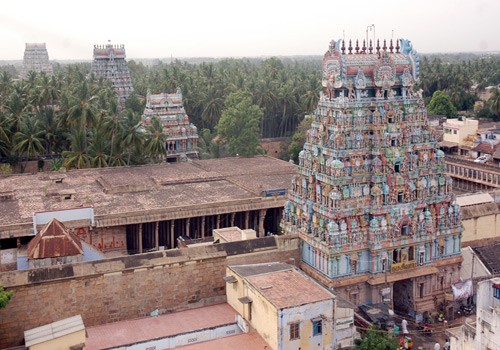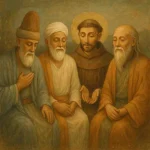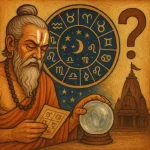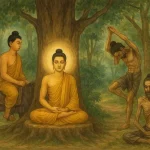This is the third in the five part Shiva series of articles that will be published in this week of Sravana Month.
Thiruvanaikaval situated in the suburbs of Trichy, Tamilnadu is one of the most beautiful temple is one of the Panchabhoota Stal in South India. The presiding deity here is Lord Shiva as Sri Jambukeshwara representing the Water element is submerged in water.
Temple is on the banks of river Kaveri and is close to the river Island of Sri rangam. It has five concentric walls and seven Gopurams and is covered by splendid carvings. It is also the home town of the Nobel Laureate Sir C. V. Raman who won the Nobel Prize for Physics in 1930.
It was built by one of the earlier Chola Rulers Kochengannan nearly 1800 years ago. The temple is one of the sthalas among the 275 Paadal Petra Sthalams meaning the place which has found mention in the songs of the Shaivite Saints called Nayanmars.

The West side of the sanctum sanctorum has a stone window through which the deity is viewed. The window has nine viewing apertures believed to represent the Navagrahas or could also mean the nine holes representing the nine outlets of the human body. A small door about 4 feet high on the southern wall forms the entrance into the sanctum. At the centre of the Brahma Sthana is the Linga of Lord Jambukeshwara. A stream of water is said to emerge from the Linga and this can be demonstrated by the soaking of clothes on which it is draped. The water increases significantly during the monsoon.
Legend
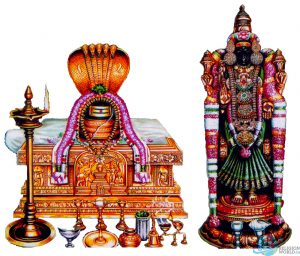
Legend says that Once, Parvati mocked Shiva’s penance for the betterment of the world and Shiva has banished her to Earth. The dejected Parvathi to do penance took the form of Akhilandeshwari as per Shiva’s wish and goes to the Jambu forest. Parvathi to worship Lord then makes a lingam out of water from the Kaveri river under the Venn Naval (blackberry) tree. Hence the lingam here is known as Appu Lingam (or water lingam). According to the Scriptures it here Shiva has taught Shiva Gnana to Parvathi.
How the Temple got its name
Once the two Ganas (Shiva’s disciples ) in Kailash ‘Malyavan’ and ‘Pushpadanta’ were always fighting for one upmanship on who is a bigger devotee of Shiva. In one such quarrel ‘Malyavan’ cursed ‘Pushpadanta’ to become an elephant on earth and the latter cursed the former to become a spider on earth. Undeterred by the curses both the Gana’s came to Jambukeswara as The elephant and the spider and continued their Shiva worship. The elephant collected water from river Kaveri and conducted ablution to the lingam under the Jambu tree (Eugenia jambolana) daily. The spider constructed his web over the lingam to prevent dry leaves from dropping on it and prevent sunlight directly falling on it. Elephant saw the web and thought it was dust on lingam, tore them and cleaned the lingam by pouring water and the practice continued daily. The spider became angry one day and crawled into the trunk of the elephant and bit the elephant to death, killing itself. Shiva, in the form of Jambukeswara, moved by the deep devotion of the two, relieved them from the curse. As an elephant worshipped Shiva here, this place came to be known as Thiru Aanai Kaa (thiru means holy, aanai is elephant, kaa (kaadu) means forest. Later the name‘Thiruaanaikaa’ became ‘Thiruvanaikaval’ and ‘Thiruvanaikoil’.
The Story of Red- eyed King
It is said that the Spider took another birth as the King Kochengot Chola (kotchengannan cholan meaning red-eyed king) and built 70 temples and Jambukeswara temple is one among them. And it is said that the King remembering his enmity with the elephant in his previous birth has built the Shiva Sannathi (sanctorum) such that not even a small elephant can enter. The entrance on the sanctorum of Jambukeswara is only 4 foot high and 2.5 foot wide.

Legend of Vibhuti Praharam
It is said that at the time of construction of the fifth enclosure, the Chola king had to go to war to defend his kingdom. Even in the battlefield his mind was constantly on the Lord and the incomplete temple construction. Lord Shiva in his infinite mercy is said to have come as Vibhuti Chitthar and completed the construction. And the praharam is named Vibhuti Praharam and the walls around it are known as ‘Thiruneethran Thirumadhil’ where Thiruneeru in Tamil means Vibhuti and Madhil means wall.
Must Read Shiva Temples – The Power of Vayu
Legend Neivedhyam
Once, a Brahmin aspiring to become a poet prays to Goddess Akhilandeshwari seeking her blessings. And Goddess materializes as a woman chewing betel leaves. To test him she sought his permission to spit the betel juice in his mouth as she could not desecrate the temple. This angered the Brahmin and he refused to allow her to do it. Meanwhile another devotee named Varadhan who was very particular about cleanliness and purity in temples visited the temple. The Goddess went to test him and when she placed the same condition, he readily agreed. He later became a famous poet named Kalamegam. Thus even to this day betel nuts and leaves are offered to the Goddess to ensure success in education.
History
Initially the Temple was constructed by the Chola Kings in 11th and 12th Century. There are many inscriptions regarding their contribution and grants to the Temple.
The temple was widely expanded by the Hoysala Kings including the 7 tiered Raja Gopuram. There were frequent conquests between the French and English forces in the temple and its pagodas. The temple has been maintained by the Nattukotai Chettiars during recent centuries.
Architecture of the temple
The architecture of the temple is so classic that it is said to have even surpassed that of the Srirangam Ranganathaswamy temple which was constructed around the same period. There are five enclosures inside the temple. There is a huge and magnificent 7 tiered Raja Gopuram in the entrance. The idols of Kali and Veerabhadra are on either side of the entrance. The outermost fifth enclosure is a massive outer wall known as the Vibhuti Praharam. It is two feet thick, over 25 feet high and stretches over a mile.
At the Fourth Enclosure there is another seven tiered tower with a shrine of Lord Ganesha at the entrance. The fourth precinct encloses a hall with 796 pillars and is 2436 feet by 1493 feet. It also has a tank with ever flowing springs.

Third Enclosure at its entrance has another tower called the Mallapan tower with two shrines of Ganesha and Subramanya at its entrance. The third precinct encloses two gopurams (gateway towers) which are 73 and 100 feet tall, a coconut grove and a small water tank. It measures 745 feet by 197 feet and is surrounded by a wall 30 feet high.
Second Enclosure has another huge seven tiered tower and the actual temple starts from this area. The second precinct is 307 feet by 197 feet with a gopuram 65 feet high and several small shrines and pillared mandapas. On the left side there is a big sub shrine almost like a separate temple dedicated to Jambukeshwar-Akhilandeshwari. Beyond that there is ‘Oonjal Mandapa’. After that there is a mandapa full of pillars containing beautiful sculptures. A small Ganesha idol is located here. There are many small Shrines dedicated to Meenakshi, Shankareswari, Kubera, here and also there small mandapas are located here. In a particular mandapa there are four statues of dancing girls found which are extremely attractive. The 100 pillared mandapa is also located here.
Goddess Akhilandeshwari’s shrine
Unlike the other Shiva temples, there is no marriage conducted in this temple for Shiva and Parvati as here Parvati was like a student and Lord Shiva as he taught her Shiva Gnanam. Therefore temple are installed opposite to each other. Such temples are known as Upadesha Sthalas.
The Temple Priest daily at Noon dresses up like Akilandeswari, and performs the Midday Pooja(Ucchi Kala Pooja).
Goddess Akhilandeshwari and Prasanna Vinayaka are in the shape of the Pranava Mantra ‘Om’. It is believed that the Goddess was in deep anger hence during one of Adi Shankara’s visits he installed the Prasanna Ganapathy idol right opposite to her (as no mother would be angry in the presence of her child) and installed a pair of Shri Chakra earrings (Thatankas) to reduce her anger. This shrine is more like a separate temple with a separate flag post, Bali Peetha and Nandi idol facing the Goddess.

There are Sahasra Linga (1008 small lingams) opposite to the Navagraha Sannidhi. It is said that even Lord Rama on his return to Lanka after vanquishing Ravana installed a lingam called the Maragatha Lingam to get rid of the ghosts of the Asuras that were following Him. Hence devotees pray to Him for removal of obstacles in marriage leading to marital bliss and harmony here.
Lord Shanmukha ( Kartikeya) is seen here in a rare form with a demon under his feet. It is believed that a famous saint named Arunagirinathar approached Lord Muruga for protection from evil thoughts. The demon under the feet of Lord Muruga is said to symbolize evil thoughts.
A festival of classical Indian dance called Natyanjali is hosted in the temple annually. A school for training of the classical pipe instrument called Nadaswaram in Tamil Nadu is also established in the temple. Muthuswami Dikshitar, one of the foremost composers of Carnatic music has sung in praise of the Goddess Akhilandeshwari.
Festivals
The Vaikasi Utsavam is celebrated in the month of Vaikasi(May-June).
Maasi Shivaratri Utsavam is celebrated every year on the 13th night/14th day of the Maasi month.
Since Goddess Parvati performed penance in the month of Adi(July Aug), Fridays in this month of Adi is celebrated with great pomp. During this time the temple is open from 2am to 12 am.
Must Read Shiva Temples : Ekambareswar, The Lord of Mango Tree

